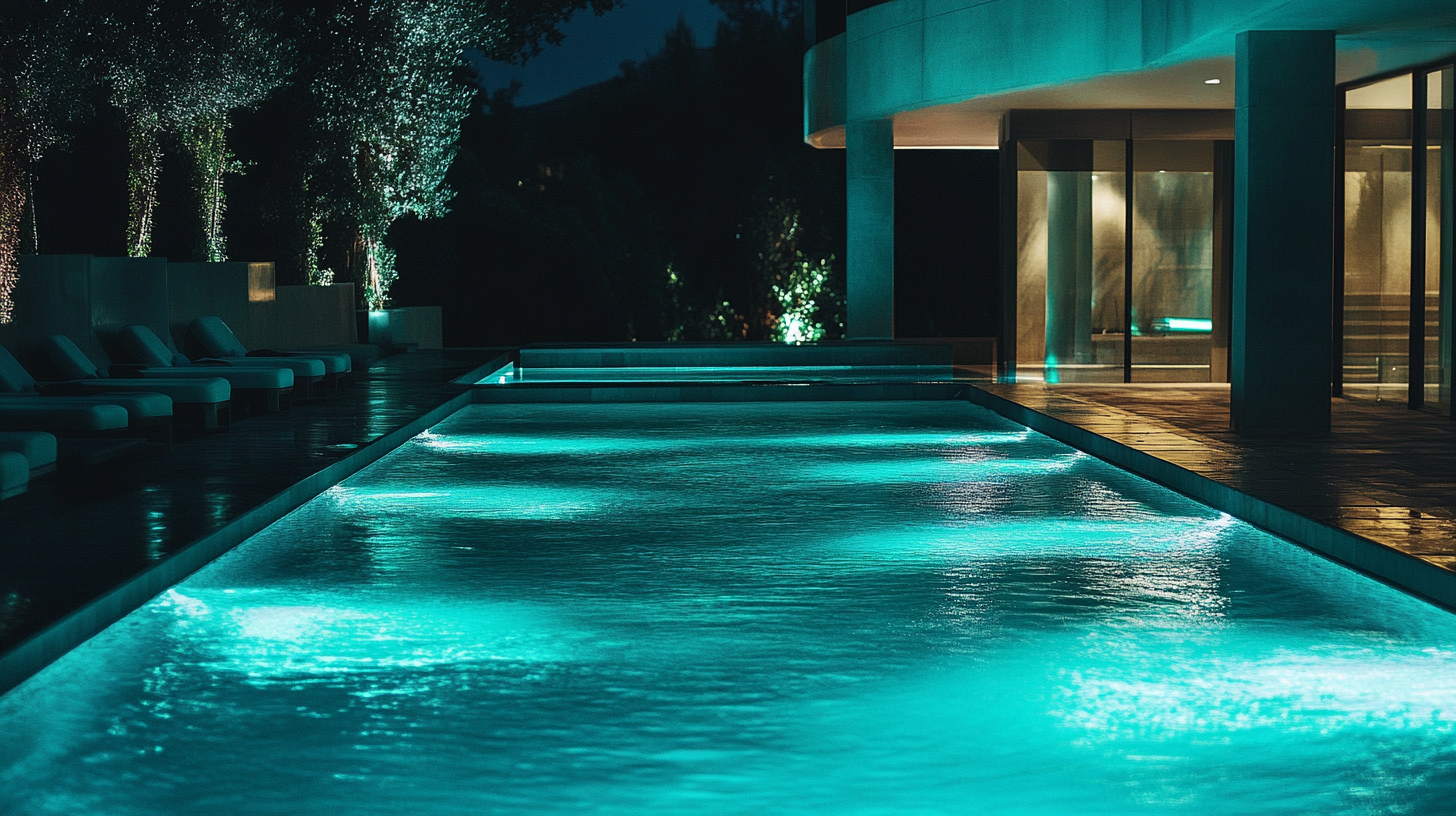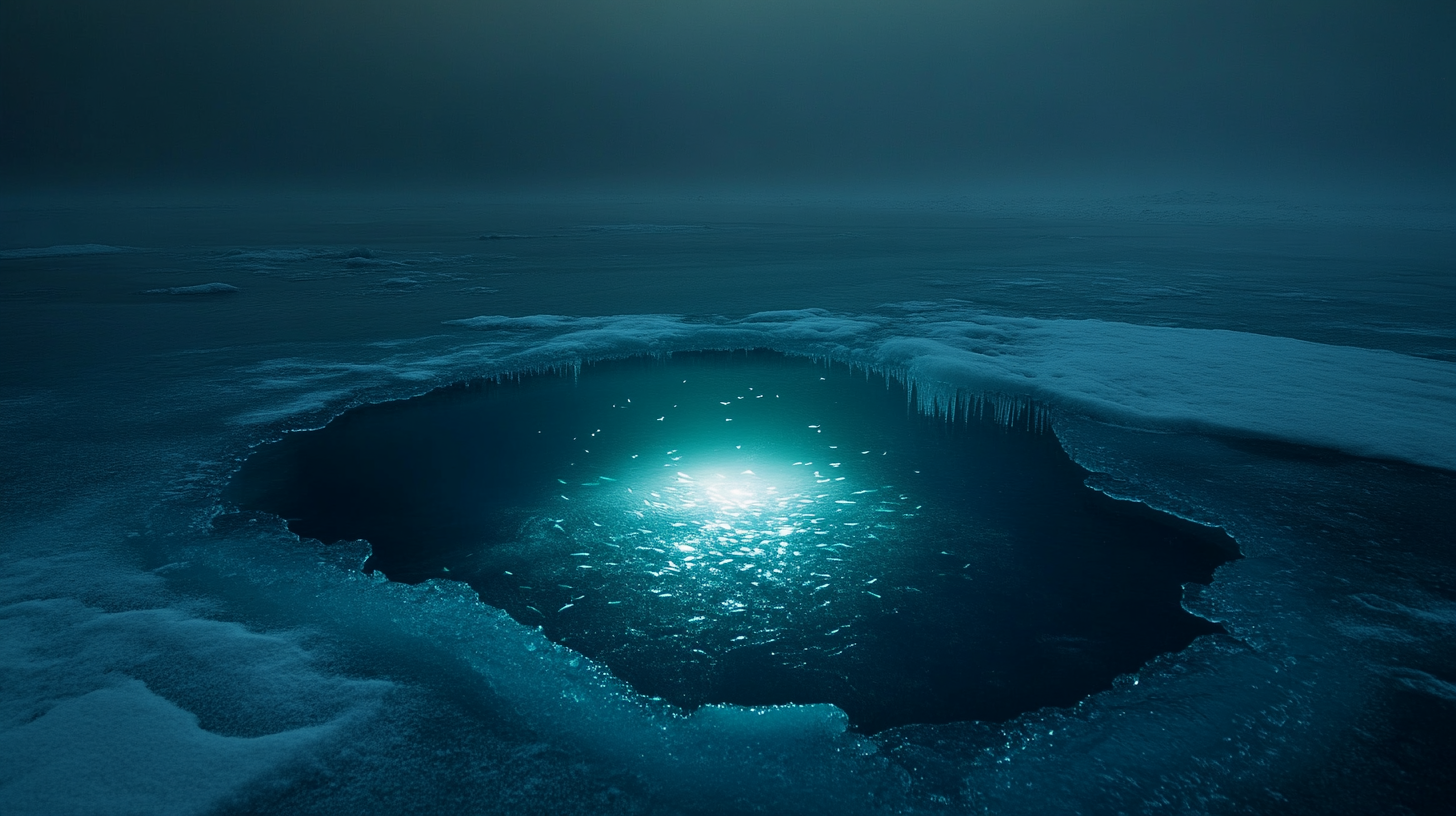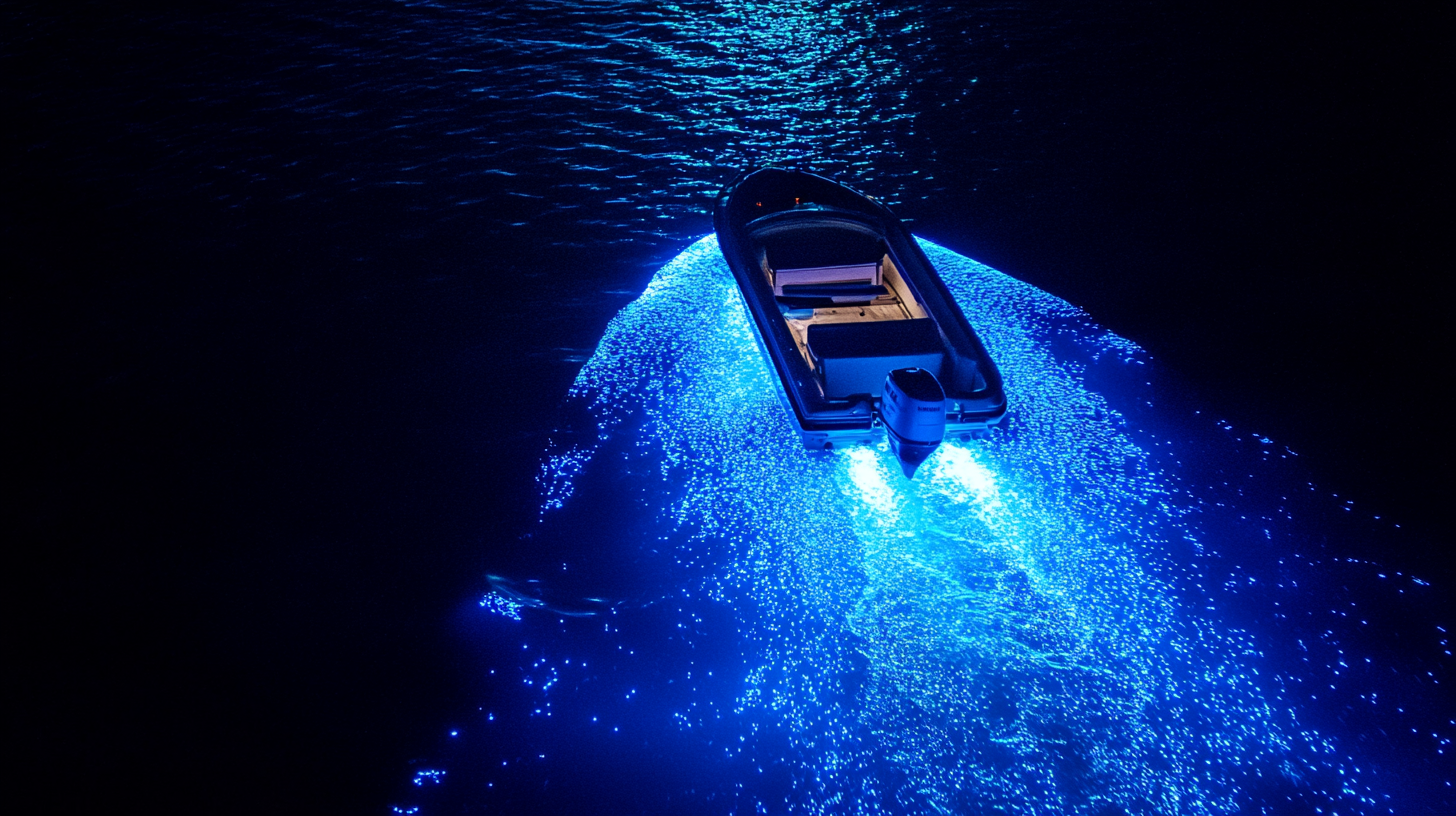Underwater pool lights for beginners
When it comes to choosing the right type of underwater pool lights for beginners, there are several key factors you’ll want to consider. First off, the last thing you want is for your lights to get lost in the ambiance. That’s why it's important to match the brightness and color options with the aesthetic you’re aiming for in your pool area. LED lights have become incredibly popular for underwater installation because they not only provide vibrant colors but are also energy-efficient and long-lasting—a win-win for homeowners.
If you’re looking for something classic, incandescent or halogen lights might come to mind. However, these older styles are less durable and tend to consume more energy, adding up quickly on your utility bills. That’s why many beginners lean toward LED systems, which provide customizable displays ranging from a soft white glow to a full rainbow of colors. Plus, LEDs run cooler, meaning less wear and tear over time.
The design of your pool also plays a role in your decision-making. For instance, if your pool has stairs, built-in benches, or shallow zones, you’ll want to place lights that enhance safety by illuminating these features. Some types of fixtures come with specific beam angles, giving you the freedom to choose broader or more focused light coverage depending on whether you want to light up a small area or the entire pool.
Lastly, don’t forget compatibility. Some lighting systems integrate with smart home setups, allowing you to control the brightness and color from your phone or voice-activated system! This is an excellent perk for those who like flexibility in setting the mood with the touch of a button. Ultimately, opting for the right pool lights boils down to durability, energy usage, and how they align with your pool’s layout and your vision for the ideal evening swim atmosphere.
How to install underwater pool lights
Installing underwater pool lights may seem a bit daunting at first, but with the right approach, even beginners can get the job done with confidence. Before you roll up your sleeves, it's crucial to understand the two main types of pool lights you might be working with: surface-mount and niche-mount. Surface-mount lights are easier for beginners since they don’t require cutting into your pool wall. They attach directly to the surface, and many modern versions are quite slim and unobtrusive. On the other hand, niche-mount lights fit into specially designed pockets in the pool wall, giving them a flush, integrated look—but they do require more complex installation.
First, turn off all power to the pool area. It might seem obvious, but working with electricity around water is no joke! Once you've confirmed the area is safe, prepare the fixture. If you purchased new pool lights, many come with a step-by-step guide. But in general, you'll want to start by locating the junction box near the pool where your new light’s power supply will connect. Run your wiring from the light fixture to the junction box using conduit pipes to protect the wiring — this is especially critical for underwater lights, as the system needs to be waterproof and safe at all times.
When installing the light fixture itself, make sure it's properly sealed before submerging it. For surface-mount lights, secure them on the pool wall using screws or brackets but double-check the manufacturer's instructions to ensure a watertight fit. If you’re working with niche-mounted fixtures, you'll need to install the fixture into the housing or “niche” that’s already built into the pool wall. This process involves carefully threading the wiring through the niche, sealing it, and ensuring that the fixture fits snugly.
Now comes the fun part—testing! Once your pool lights are secured in place, reconnect the power (don't worry, most underwater lights run on low voltage) and flick the switch on. If everything is wired correctly and sealed properly, your underwater lights should glow beautifully beneath the surface. If not, double-check the connections and seals for any issues. Installing underwater pool lights for beginners is about patience and precision, but once that shimmering light hits the water, it'll all be worth it!
Safety considerations for pool lighting
When it comes to pool lighting, safety is a top priority, especially if you’re a beginner. Water and electricity are never a perfect match, so it’s essential to follow strict safety guidelines to avoid any unwanted accidents. First off, always ensure you’re using lighting fixtures specifically designed for underwater use. Regular outdoor lights just won’t cut it—they aren’t built to withstand constant exposure to water and could pose significant electrical hazards. Underwater pool lights are specially sealed to be water-resistant and must comply with waterproof ratings like IP68, which guarantees the fixture can be fully submerged without issues.
A vital part of pool lighting safety is ensuring that your electrical setup complies with local building and electrical codes. This means using a Ground Fault Circuit Interrupter (GFCI) on all outdoor and pool-related electrical components. These handy devices are designed to cut off power if they detect even the slightest fault or current leakage, preventing electrocution. GFCIs are non-negotiable for any pool lighting installation, and if you’re not sure whether your pool currently has one in place, it's well worth bringing in a certified electrician to verify your setup for you. That’s right—even seasoned DIY enthusiasts sometimes need the help of a pro to make sure things are entirely up to par!
Voltage is another safety consideration not to overlook. Underwater pool lights typically run on low-voltage systems—usually 12V or 24V—making them significantly safer than household voltage. While the lower voltage doesn't eliminate all risk, it greatly reduces the danger zone. Low voltage systems also tend to be more energy-efficient, making them a smart choice for those looking to balance safety and cost-effectiveness.
Cable management is also essential when working with pool lights. Exposed or poorly insulated wiring around any wet environment is a disaster waiting to happen. Be sure that all the cables leading to your underwater lights are correctly encased in conduit piping, protecting them from water damage and ensuring a longer lifespan. Pay extra attention to junction boxes, where your wiring connects to the power source. All these connections must be watertight to stop any moisture from creeping into electrical components.
For beginners installing or maintaining existing underwater pool lights, it's also a good idea to periodically check for any signs of corrosion or damage. Pool water, especially if harsh chemicals are being used, can erode improper seals over time. While high-quality pool lights are built to resist this corrosion, it’s still smart to give everything a once-over every couple of months. And remember: if you spot any rust, discoloration, or fractures in the fixture, it's time to take action.
Maintenance tips for longevity
Just like any other submerged equipment, underwater pool lights require regular maintenance to ensure both their aesthetic and functional longevity. Beginners may find that a proactive maintenance approach pays off significantly in the long run, preventing costly repairs and ensuring that their pool lights continue to shine as bright as the day they were installed. Below are some essential tips to keep your underwater pool lights in top condition.
First, cleaning the lens on a regular basis is critical. Pool lights, especially those that sit submerged in chlorinated water, are prone to developing a layer of scum, algae, or mineral deposits over time. This buildup can significantly reduce the brightness of the light and dull the overall appearance of your pool during evening swims. To clean the light, start by cutting off the power supply to the lights. Once the power is off, remove the light fixture from the water. You can scrub the lens with a soft cloth or sponge and gentle, non-abrasive cleaners to remove any buildup. This simple step ensures maximum light output and prevents long-term damage to the lens.
Another preventive maintenance measure is routinely inspecting the light seals and gaskets. Over time, seals may degrade due to chemical exposure, temperature fluctuations, or simple aging. These seals are vital in keeping the interior of the light fixtures dry, preventing water from entering and damaging the internal electrical components. Inspect the gaskets at least once a year, checking for any signs of wear, cracking, or brittleness. If they look damaged, replacing them is often more cost-effective than risking water infiltration, which could lead to a complete light fixture failure.
Debris around the pool can also indirectly affect your underwater pool lights. Leaves, dirt, and other contaminants can clog the light housing or block light from illuminating your pool’s water properly, making the area around the light seem dimmer or murky. Checking the area surrounding the light and clearing any debris can go a long way in ensuring the pool lights maintain their intended brightness. You might also want to develop a cleaning schedule aligned with your general pool maintenance routine.
Temperature control is often overlooked but is especially important when it comes to the (usually LED) underwater lights most beginners prefer. LEDs are durable and energy-efficient, but like any other electronic component, they can suffer from overheating. Even though LEDs generate less heat compared to incandescent or halogen fixtures, build-up of heat can still reduce their lifespan. Ensure the water circulates properly in your pool and avoid placing lights in areas where the water is mostly static, such as near corners or shallow ends. This can minimize heat concentration and prolong the longevity of your lights.
A proactive check of the electrical wiring is also essential for maintaining both performance and safety. During these checks, focus on looking for frays, kinks, or signs of corrosion on the wires that connect your lights to the power source. Since swimming pools have harsh environments with constant exposure to chemicals like chlorine and salt, even high-quality waterproof cables can degrade over time. It’s a good idea to assess these wires annually before any potential issues turn into expensive fixes or safety hazards. If any deterioration is noticed, have an electrician handle repairs to ensure everything remains safe and compliant with local electrical codes.
One more key maintenance tip is to standardize the replacement of bulbs or fixtures, even if all lights are functioning properly. LED pool lights typically have long life spans—up to 50,000 hours—but when approaching the end of their lifespan, replacing all bulbs at once helps maintain lighting uniformity across the pool. Uneven lighting can diminish the visual appeal, and it can sometimes be challenging to replace a single light without impacting the rest of the system.
Lastly, keep detailed maintenance records that include the installation date, cleaning schedule, and any replacement parts used, such as gaskets or bulbs. This documentation ensures that any professional servicing or DIY inspections remain methodical and help you plan for the eventual need for replacements or upgrades.
Maintaining your underwater pool lights doesn’t have to be overwhelming. With organized maintenance focused on areas like cleanliness, seal integrity, and wiring checks, even beginners can easily extend the life of their lighting system and continue enjoying a beautifully illuminated pool for years to come.
Energy-efficient options for pool lighting
When it comes to energy-efficient underwater pool lights, there’s one option that consistently comes out on top: LED lighting. If you’re a beginner trying to navigate the confusing world of energy usage and long-term savings, consider this—LED underwater lights use up to 80% less energy than traditional incandescent or halogen bulbs. Not only do they dramatically cut down on your electric bill, but they also last far longer. Most high-quality LED pool lights have a lifespan of about 50,000 hours, which means they’ll keep your pool glowing for years before you even need to think about replacements.
Another big win for LED technology is its versatility. These lights are available in a broad range of colors and brightness levels, so beyond just saving energy, they allow you to create any kind of atmosphere around your pool, whether it’s a soothing evening swim or a festive poolside party. Some models even come with remote controls or smartphone apps for adjusting the lighting, letting you fine-tune brightness, color, and even set up entire scenes or patterns. You can easily go from a calming blue glow to a vibrant multi-colored light show, all without having to burn through excess electricity. Best of all, since LEDs run on low voltage, they present a much safer option for underwater use, reducing the risk of overheating or system failures over time.
For those who want to take energy efficiency even further, solar-powered options are increasingly making a splash in the pool lighting game. Yes, you read that right—solar underwater pool lights! These models use small solar panels to harness energy throughout the day and power up the lights at night. While they may not be as bright as traditional lighting systems or provide extensive color options, they’re perfect for smaller pools or as supplemental ambient lighting. And of course, they add a zero-cost boost to your electricity bill, making them a great choice for eco-conscious pool owners.
If you're still wondering how much energy you could save with various lighting options, consider that a traditional halogen bulb consumes around 300-500 watts, while an LED alternative uses only around 30-50 watts to achieve a similar brightness level. Multiply that by several lights in your pool for big potential savings every month. Over time, the difference in energy consumption adds up, making LED or solar-powered pool lights a low-cost, eco-friendly option that beginners can confidently invest in.
Moreover, energy-efficient pool lights frequently boast smart features that maximize their efficiency. Timers and dimmers are two add-ons worth exploring. A simple timer allows you to schedule when the lights turn on and off, ensuring they’re only consuming electricity during the hours you actually need them. Dimmers, on the other hand, let you reduce brightness during quieter or romantic evenings by the pool, cutting utility costs without sacrificing ambiance.
Energy efficiency doesn’t just translate to saving a couple of dollars a month—it also enhances the longevity of your pool lights, reduces your pool’s carbon footprint, and opens up creative possibilities for mood-setting and design. Whether you're interested in super-bright multi-functional LEDs or prefer basic solar-powered lights, opting for energy-efficient solutions is a smart move that beginners can easily embrace.


